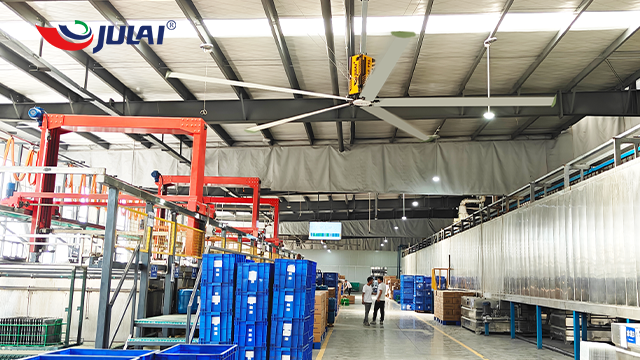How Many Blades Are Ideal for HVLS Industrial Fans?
2025-10-21
How Many Blades Are Ideal for HVLS Industrial Fans?
High Volume Low Speed (HVLS) fans are essential in industrial and commercial settings, providing efficient air circulation and contributing to energy savings. A critical aspect of their design is the number of blades, which influences performance, energy efficiency, and noise levels. This article examines the optimal blade count for HVLS fans and offers guidance on selecting the right fan for your facility.

The JULAI fan was invented by a joint venture between a US and a Chinese company in 1999. After almost 20 years of development, various industrial fans with different numbers of blades have emerged. Currently, domestically and internationally, industrial fans mainly come in three-blade, four-blade, five-blade, six-blade, and eight-blade configurations. In theory, the more blades a fan has, the greater the airflow.
However, since industrial fans are generally larger in size, more blades also mean more weight and increased safety risks. Therefore, it is necessary to strike a good balance between airflow and quality. Currently, industrial fans with five or six blades are most popular on the market. These two types are also the main products promoted abroad and have been market-certified for over a decade. As long as manufacturers strictly require high quality and safety for the blades, they can meet market demand.
In industrial settings, five or six blade HVLS fans are generally considered optimal. This configuration offers several advantages:
- Enhanced Air Movement: A five- or six-blade design ensures effective air distribution, improving comfort and ventilation in large spaces;
- Energy Efficiency: These fans can move substantial air volumes at lower rotational speeds, reducing energy consumption;
- Noise Reduction: The increased blade count allows for quieter operation, minimising disruptions in the work environment.
It’s important to note that while more blades can theoretically increase airflow, they also add weight and complexity, which may lead to increased safety risks. Therefore, a balance between airflow and quality is necessary.
